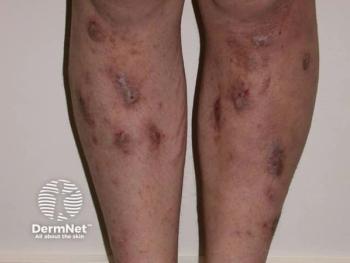
Exploring the Impact of Itch and Treatment Advances in Prurigo Nodularis
An expert discusses how prurigo nodularis represents one of the most severe itching conditions in dermatology, significantly impacting patients' quality of life and sleep, and explains the importance of breaking the itch-scratch cycle while highlighting recent treatment advances with targeted biologics like dupilumab and nemolizumab.
Episodes in this series

Video content above is prompted by the following:
Prurigo nodularis represents one of the most severe itch conditions in dermatology, with patients typically reporting numerical rating scale scores of 9 to 10 of 10.Gil Yosipovitch, MD, professor and Stiefel-endowed chair of medical dermatology at the University of Miami, explains that this condition stands out as causing more severe itch than even atopic dermatitis, significantly impacting patients' quality of life and sleep patterns.
The itch-scratch cycle is fundamental to understanding prurigo nodularis pathogenesis. Scratching leads to the development of characteristic nodular lesions, creating a vicious cycle where increased scratching causes more damage and liberates cytokines that worsen the condition. This mechanical process damages the skin barrier and amplifies inflammatory pathways, including neuropeptides and proteins that perpetuate the disease state.
The greatest challenge in managing prurigo nodularis has historically been the lack of effective treatments, leaving patients suffering for years with severe chronic itch that leads to depression, anxiety, and neuronal sensitization. However, recent advances including targeted biologics like dupilumab and nemolizumab have transformed the treatment landscape. These therapies target key cytokines IL-4, IL-13, and IL-31, offering hope for patients who previously had limited therapeutic options and significantly improving their trajectory from what was once considered an intractable condition.
Newsletter
Like what you’re reading? Subscribe to Dermatology Times for weekly updates on therapies, innovations, and real-world practice tips.




















